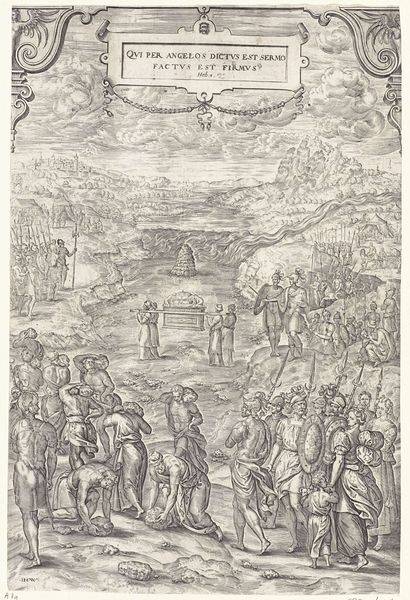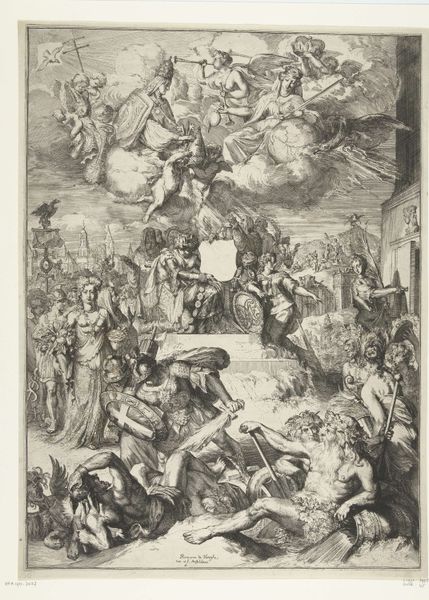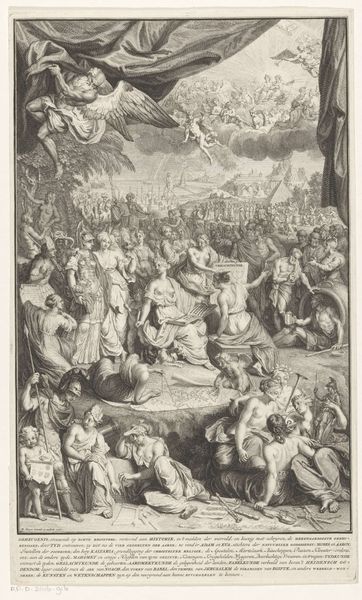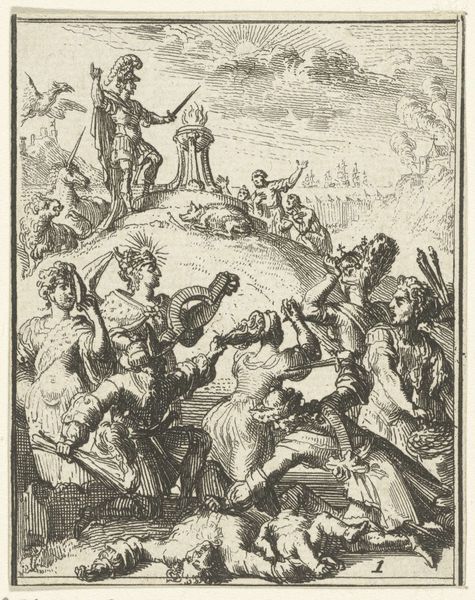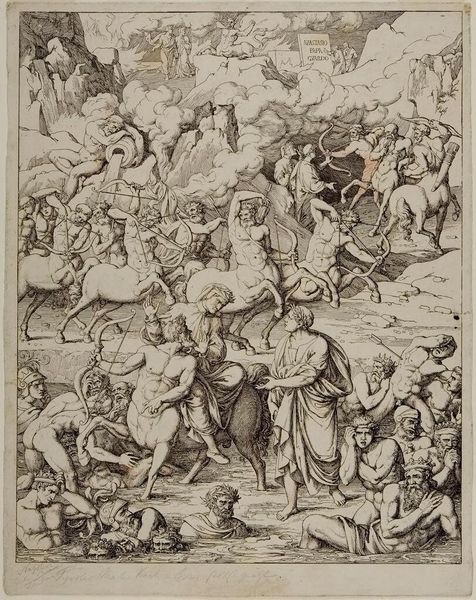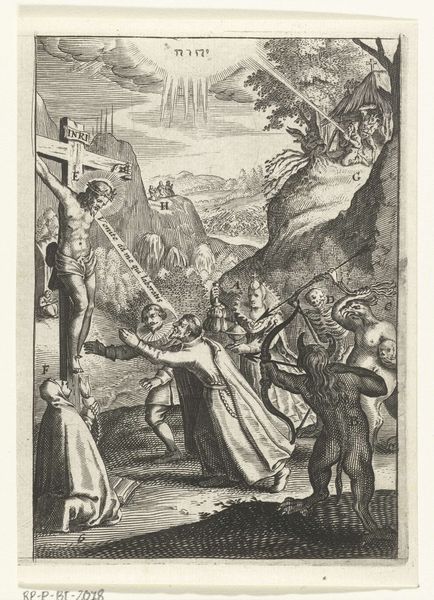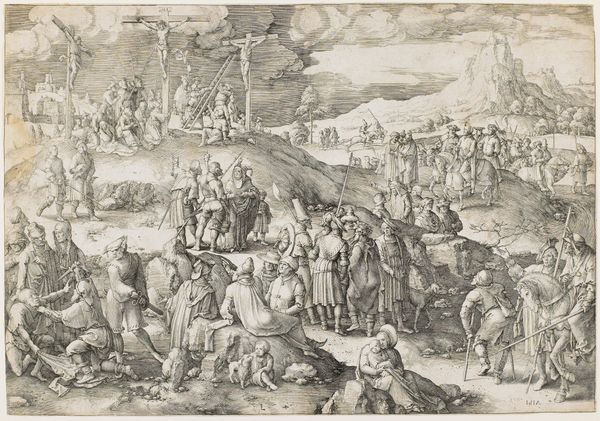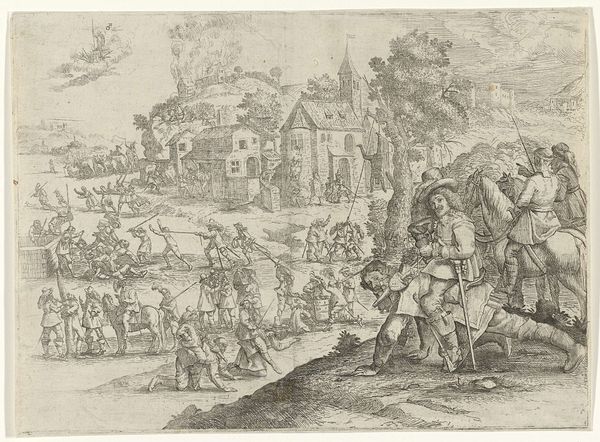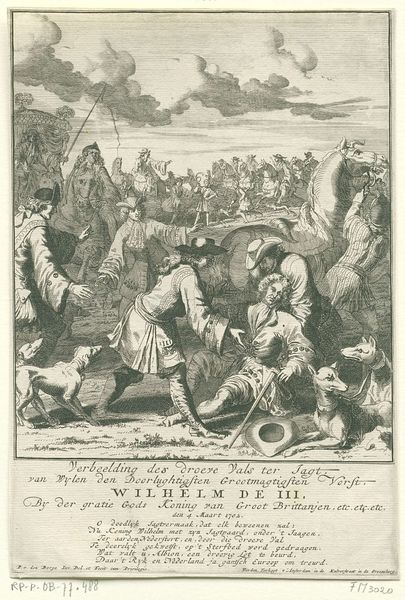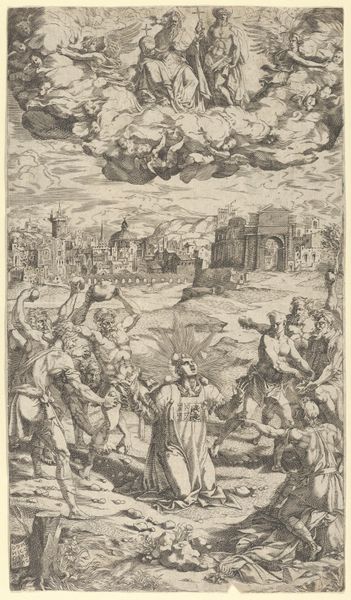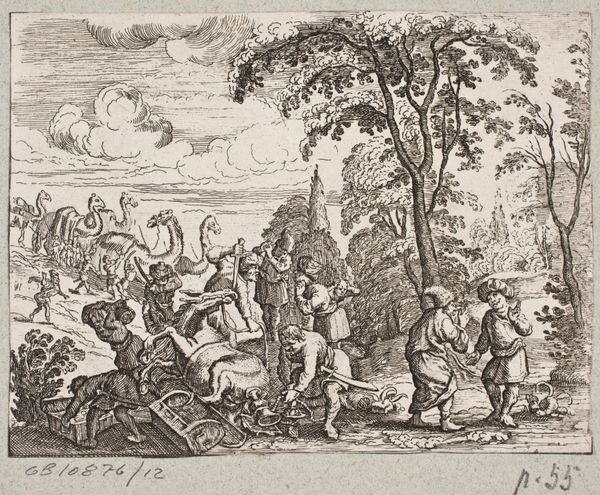
Allegorie op de gebeurtenissen in 1689 met Willem III en Maria op de troon (rechter helft) 1690
0:00
0:00
engraving
#
ink drawing
#
allegory
#
baroque
#
figuration
#
line
#
history-painting
#
engraving
Dimensions: height 574 mm, width 486 mm
Copyright: Rijks Museum: Open Domain
Curator: Here we have "Allegorie op de gebeurtenissen in 1689 met Willem III en Maria op de troon (rechter helft)," an ink drawing from 1690 by Romeyn de Hooghe. What's your first impression? Editor: My initial reaction is controlled chaos, like a Baroque mosh pit! The density of figures, the swirling composition…it's energized, but also makes my eyes dart around without settling. Curator: Indeed. This engraving reflects the shift in power after William III and Mary took the throne. Note the lines, the dense layering…De Hooghe clearly intended to convey a specific message to a broad audience. This wasn’t just high art; it was propaganda designed to circulate widely. Editor: Absolutely. It makes you wonder, though, what ordinary folk truly thought when they saw this? Was it understood, did they think about all the little details? I imagine the average person probably felt…a little overwhelmed. Almost like trying to assemble IKEA furniture. Curator: Precisely! And think about the production itself. The engraver’s skill, the labor, the cost of materials, even the paper. Each element contributed to shaping public perception. Consider how the choice of engraving allowed for mass production. It suggests this allegory wasn’t aimed at the elite, but rather intended to mold a more popular understanding of events. Editor: I see the allegory now, with King William. He has this rather stern face amidst what looks like either reverie or upheaval, as if to silently remark, “Order! Please!" All these faces – how much reality did it actually represent versus, you know, how much was a complete construction, fabricated on paper and, therefore, in "reality". Curator: That tension between real and fabricated is exactly the point, I believe! De Hooghe crafted an image to solidify the new power dynamic in the minds of the masses, thereby making that power…real. And that's very interesting. Editor: Well, whatever its actual power then and there, and however much history it made or did not, the work stands powerfully on its own now, ready to incite discussion about these very things.
Comments
No comments
Be the first to comment and join the conversation on the ultimate creative platform.
